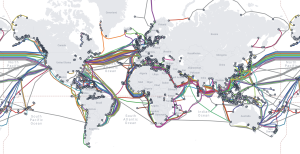The Future of Satellites: Advancements and Innovations in Space Technology
Future of satellites is an exciting and rapidly evolving field, with new technologies and innovations emerging all the time. From satellite constellations to reusable rockets, the future of space exploration is looking brighter than ever. In this article, we will explore the latest developments and trends in satellite technology, and examine what the future holds for this fascinating field.
Introduction to Satellite Technology
Satellite technology has come a long way since the launch of the first artificial satellite, Sputnik, in 1957. Today, satellites are used for a wide range of applications, including communication, navigation, weather forecasting, and Earth observation. With the advancement of technology, satellites have become smaller, cheaper, and more efficient, making them more accessible to a wider range of users.
Advancements in Satellite Technology
One of the most significant advancements in satellite technology is the development of satellite constellations. A satellite constellation is a group of satellites that work together to provide global coverage and connectivity. These constellations are made up of many small satellites, often called CubeSats, which are launched into low Earth orbit and communicate with each other to provide a network of coverage. Companies such as SpaceX, OneWeb, and Amazon are leading the charge in developing these constellations, which promise to provide fast and reliable internet connectivity to even the most remote areas of the world.
Innovations in Space Exploration
Another area of innovation in satellite technology is the development of reusable rockets. Reusable rockets are designed to be launched into space and then return to Earth, where they can be refurbished and launched again. This technology has the potential to significantly reduce the cost of accessing space, making it more affordable for companies and governments to launch satellites and other spacecraft. SpaceX has been at the forefront of this technology, with its Falcon 9 and Falcon Heavy rockets having successfully launched and landed numerous times.
Applications of Satellite Technology
Satellite technology has a wide range of applications, from communication and navigation to weather forecasting and Earth observation. Satellites are used to provide internet connectivity, transmit television signals, and enable global navigation systems such as GPS. They are also used to monitor the weather, track climate change, and observe the Earth’s natural resources. With the advancement of technology, satellites are becoming increasingly important for a wide range of industries, including agriculture, transportation, and emergency response.
Conclusion
In conclusion, the future of satellites is bright, with advancements in technology and innovations in space exploration opening up new opportunities for satellite applications. From satellite constellations to reusable rockets, the latest developments in satellite technology are poised to transform the way we communicate, navigate, and understand our planet. As the field continues to evolve, we can expect to see even more exciting innovations and advancements in the years to come.

